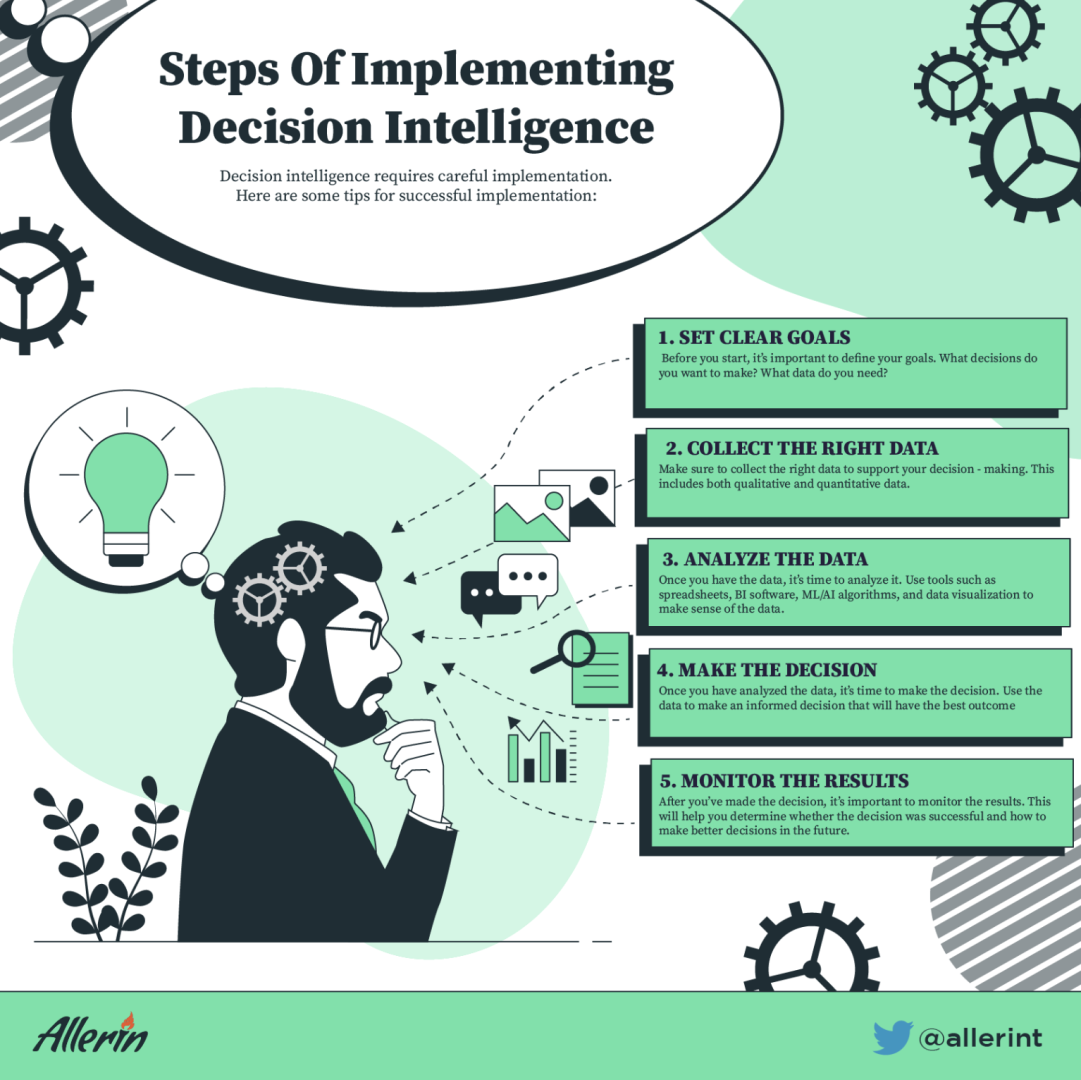Spreadsheets
Spreadsheets are the simplest way to analyze data and make decisions. They can be used to create basic financial models and analyze large datasets.
Business Intelligence (BI) Software
BI software is designed to help businesses make better decisions by providing real-time insights into the performance of their business. It can be used to identify trends, analyze customer data, and make predictions about the future.
Machine Learning and Artificial Intelligence (ML/AI)
ML/AI algorithms can be used to automate decision-making processes. They can be used to analyze large datasets and make predictions about the future.
Data Visualization Tools
Data visualization tools can be used to present data in an easy-to-understand format. This can help people make better decisions by providing a clear picture of the data.
CHALLENGES OF USING DECISION INTELLIGENCE

Decision intelligence can be a powerful tool, but it also has its challenges.
- One of the biggest challenges is the availability of data. Decision intelligence requires access to accurate and relevant data, and this can be difficult to obtain.
- Another challenge is the complexity of the data. Decision intelligence requires an understanding of the data and how it relates to the decision. This can be difficult to master, and it requires a deep understanding of the data and the decision-making process.
- Finally, decision intelligence can be difficult to implement. It requires significant investment in both time and money, and it can be difficult to get buy-in from stakeholders.
IMPLEMENTING DECISION INTELLIGENCE
Decision intelligence requires careful implementation.
Here are some tips for successful implementation:

Set Clear Goals Before you start, it’s important to define your goals. What decisions do you want to make? What data do you need?
Collect the Right Data
Make sure to collect the right data to support your decision-making. This includes both qualitative and quantitative data.
Analyze the Data
Once you have the data, it’s time to analyze it. Use tools such as spreadsheets, BI software, ML/AI algorithms, and data visualization to make sense of the data.
Make the Decision
Once you have analyzed the data, it’s time to make the decision. Use the data to make an informed decision that will have the best outcome.
Monitor the Results
After you’ve made the decision, it’s important to monitor the results. This will help you determine whether the decision was successful and how to make better decisions in the future.
STRATEGIES FOR SUCCESSFUL DECISION INTELLIGENCE
Here are some strategies for successful decision intelligence:

Understand the Data
It’s important to understand the data and how it relates to the decision. Make sure you have a deep understanding of the data before making a decision.
Make Sure the Data is Accurate
It’s important to make sure the data is accurate and up-to-date. This will help ensure that the decisions are based on the most accurate information.
Focus on the Goal
Make sure to keep the goal of the decision in mind. This will help ensure that the decision is the best one for the circumstances.
Use Technology
Technology can be a powerful tool for decision intelligence. Use tools such as BI software, ML/AI algorithms, and data visualization to make the most of the data.
Be Open to Change
Decision intelligence is a constantly evolving field. Be open to change and new ideas to ensure that your decision intelligence is up-to-date.
CONCLUSION
Decision intelligence is a powerful tool for making better decisions. By understanding the data and using tools such as BI software, ML/AI algorithms, and data visualization, it’s possible to make better decisions. With careful implementation and the right strategies, decision intelligence can be a powerful tool for making smarter decisions.







Comments